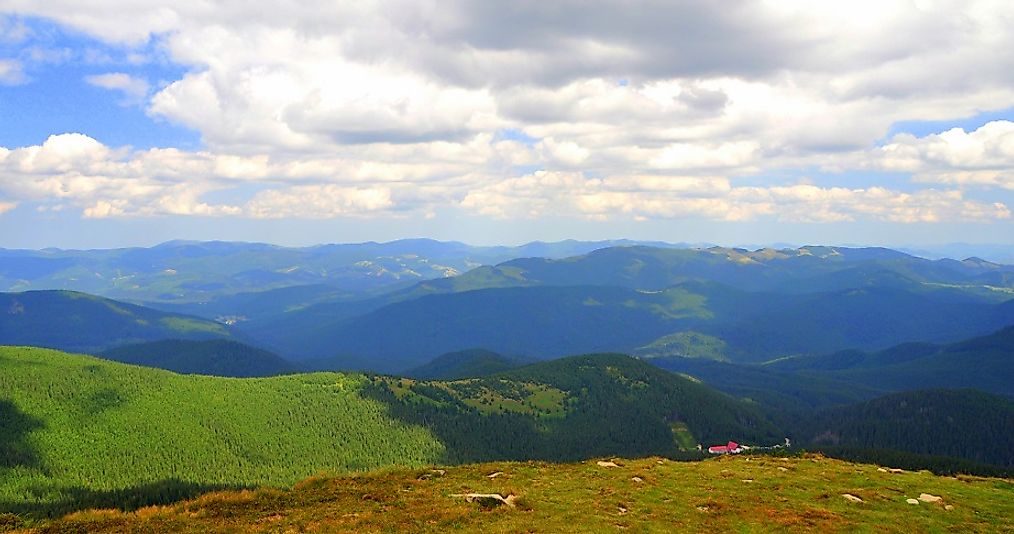Ecological Regions Of The Czech Republic

The Czech Republic sees significant variations in seasonal temperatures across its territory, and a large portion of its natural areas are protected. However, the protective and conservative measures are not enough to protect the already fragile ecosystems of the country. With the extensive logging especially the large-sized clear-cutting, deforestation, and improper land use, the ecological regions in the Czech Republic are threatened by the existence of human activities in the area. Illegal logging also takes place in protected areas and soon vast areas of forest cover will be left bare without the natural vegetation. Lack of native plant life has also led to the absence of endemic biodiversity of some ecoregions. The World Wide Fund for Nature subdivides the Czech Republic into four ecoregions, the Central European mixed forests, the Pannonian mixed forests, Western European broadleaf forests and the Carpathian Montane conifer forests.
5. Carpathian Montane Conifer Forests-
The Carpathian Mountains run from the west border of the Czech Republic all the way to the "Iron Gate" of the Danube River that lies between Romania and Yugoslavia, where the river takes on a form that appears similar to an archer's bow. The highest point in the Carpathian Mountains is the Tatras which lies on the border of Poland and Slovakia. The forest provides habitats to large populations of brown bear, lynx, and wolf, and also forms the last home of the wild cat and nesting for the golden eagle. The watersheds of the mountains feed the rivers in the region. The climate of this ecosystem is moderately cold and humid, and both temperature and rainfall correlate with elevation. The northern parts are composed of Carpathian flysch which consists of sandstone and shale layers. Crystalline rock mainly the granite forms the highest mountain ranges of the Tatras, Paring, and Retezat. The Western Carpathians have limestone bedrock. Around 16% of the ecosystem is under some form of protection, but illegal logging, hunting, and development threaten the ecoregion.
4. Central European Mixed Forests-
The Central European Mixed Forests is an ecosystem of mixed broadleaf and conifer forests located in the lowland plains of northern Europe stretching across the Czech Republic, Ukraine, Belarus, Poland, and Lithuania. The mixed forests are a terrain of vast plains at the center, upland areas to the south and hilly moraines with lakes to the north. Most of the region lies below 300 meters above sea level with the highest point not exceeding 600 meters. The mean annual temperatures range from between 7 degrees Celsius and 9 degrees Celsius, and the climate is mild in the west and continental in the east. Past glaciations have resulted in a lack of endemic flora species. However, there are numerous boreal plants including the cloudberry, dwarf birch restricted to the northern parts of the ecoregion. Thermophilus plant species endemic to warmer and drier habits grow in the southeastern parts of the mountains and also in the open and semi-open habitats formed through human activities such as grazing livestock and burning brush. Species of the European hare are declining rapidly as a result of land misuse. The white-tailed eagle (Haliaeetus albicilla) and spotted eagle (Aquila clanga) live in these mixed forests. Endangered species include European bison (Bison bonasus), lynx (Lynx lynx), the black grouse (Tetrao urogallus), pond cat (Myotis dasycneme), and the steppe polecat steppe (Mustela eversmannii). Approximately 75% of the Central European is planted forests. Defoliation for the Scots pine and spruce is common in the Czech Republic.
3. Pannonian Mixed Forests-
The Pannonian Mixed Forests belong to the Temperate Broadleaf and Mixed Forests biome. The forests lie in a depression surrounded by the Dinaric Mountains, Carpathian Mountains, and the Alps. The mountainous region surrounding the Pannonian causes a rain shadow over the Pannonian mixed forests allowing little rainfall to reach the central region of the ecoregion. Much of the natural habitats, plant and animal species have been lost to agriculture. Some of the dominant trees include the turkey oak, sessile oak, and pedunculate oak. There are also mixed oak-hornbeam forests, beech interspersed with steppes, poplar and floodplain vegetation. The region has a warm temperate and summers are also hot. Resident mammals include wolf (Canis lupus), European rabbit (Oryctolagus cuniculus), the endangered European mink (Mustela lutreola) and reptiles such as the Balkan Wall Lizard and the Orsini Viper. The terrain mostly constitutes of numerous rivers, streams, and lakes.
2. Western European Broadleaf Forests-
The Western European Broadleaf forests belong to the temperate broadleaf and mixed forests biome. The biome covers vast regions in Western Europe of the Czech Republic, Austria, Germany, Switzerland, and France. It is primarily composed of lowlands, alti-montane beech and the mixed beech forests and some parts of sub-Mediterranean, meso-supra-Mediterranean downy oak forests and the mixed oak-hornbeam forests. The ecoregion supports a wide variety of animals particularly birds species and some mammals.
1. Environmental Threats and Conservation Efforts-
Current threats to habitats and biodiversity in the Czech Republic include water and air pollution, extensive logging, development of large ski resorts, tourism, soil compaction, and littering. Clearing forests for agriculture cause habitat loss putting plant and animal life in danger. Deforestation also threatens the biodiversity of these forests especially in the Carpathians, and the rapid abandonment of traditional forms of agriculture. Severe fragmentation of the regions occurs when highways and multi-tract railroads create barriers to wildlife movement. At the European level, only 6.3% of forests have protected status. 95% of European protected forests are fragments occupy a tiny area of not more than ten square kilometers. Also, 16% of the Carpathian enjoy protection from the member countries it covers. The Czech Union for Nature Conservation also brings together individuals interested in protecting natural conservation and environmental issues.











